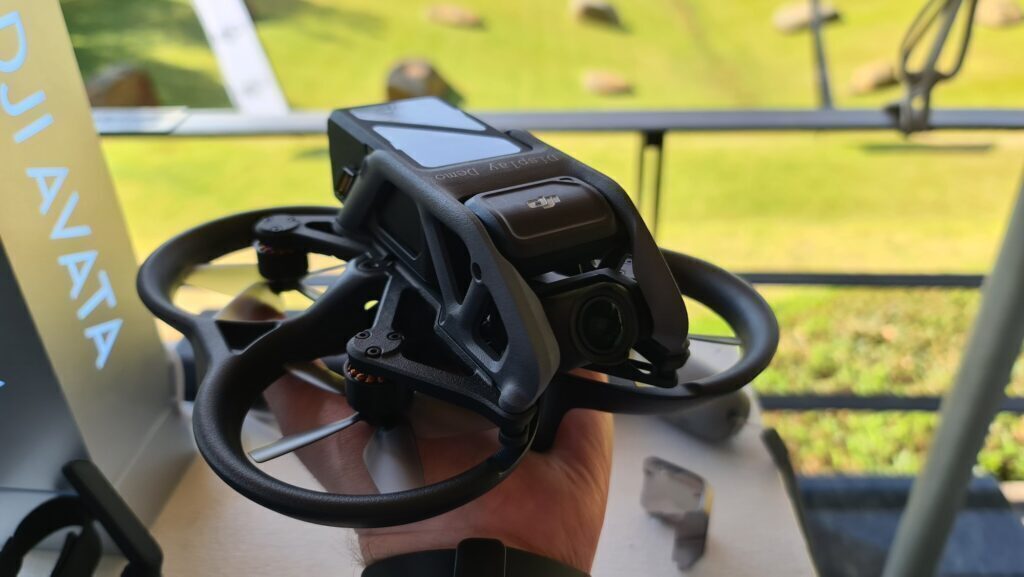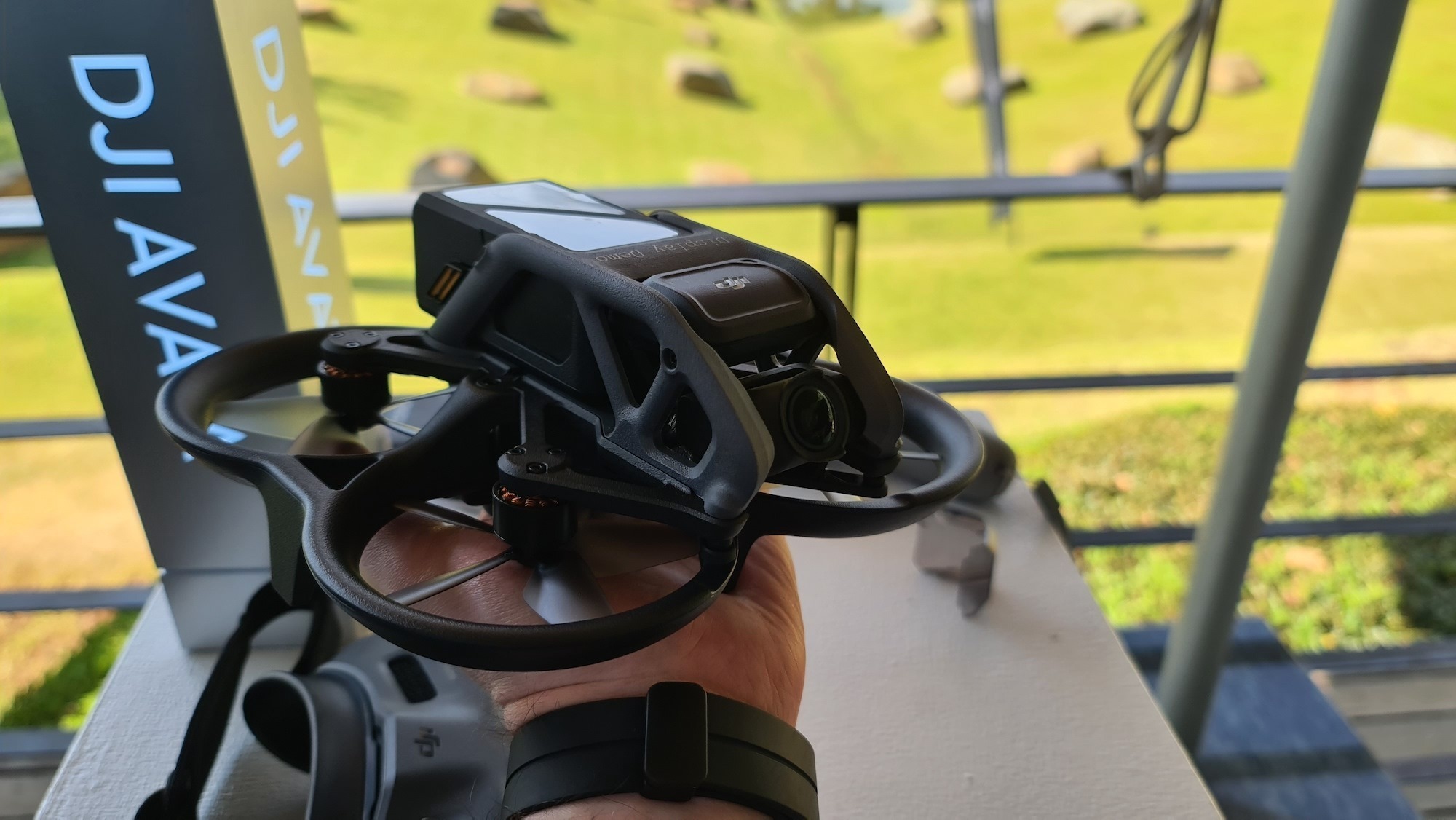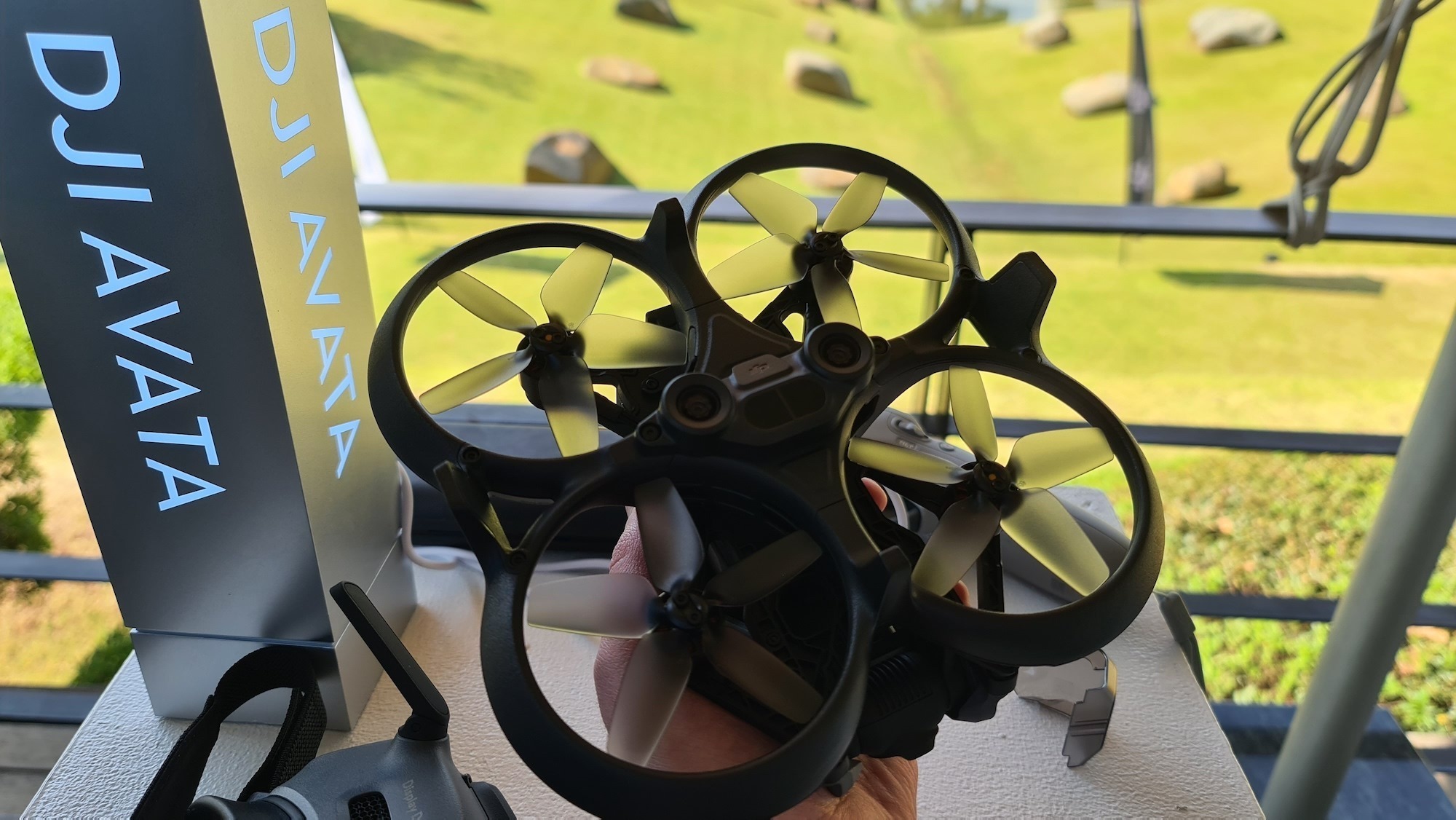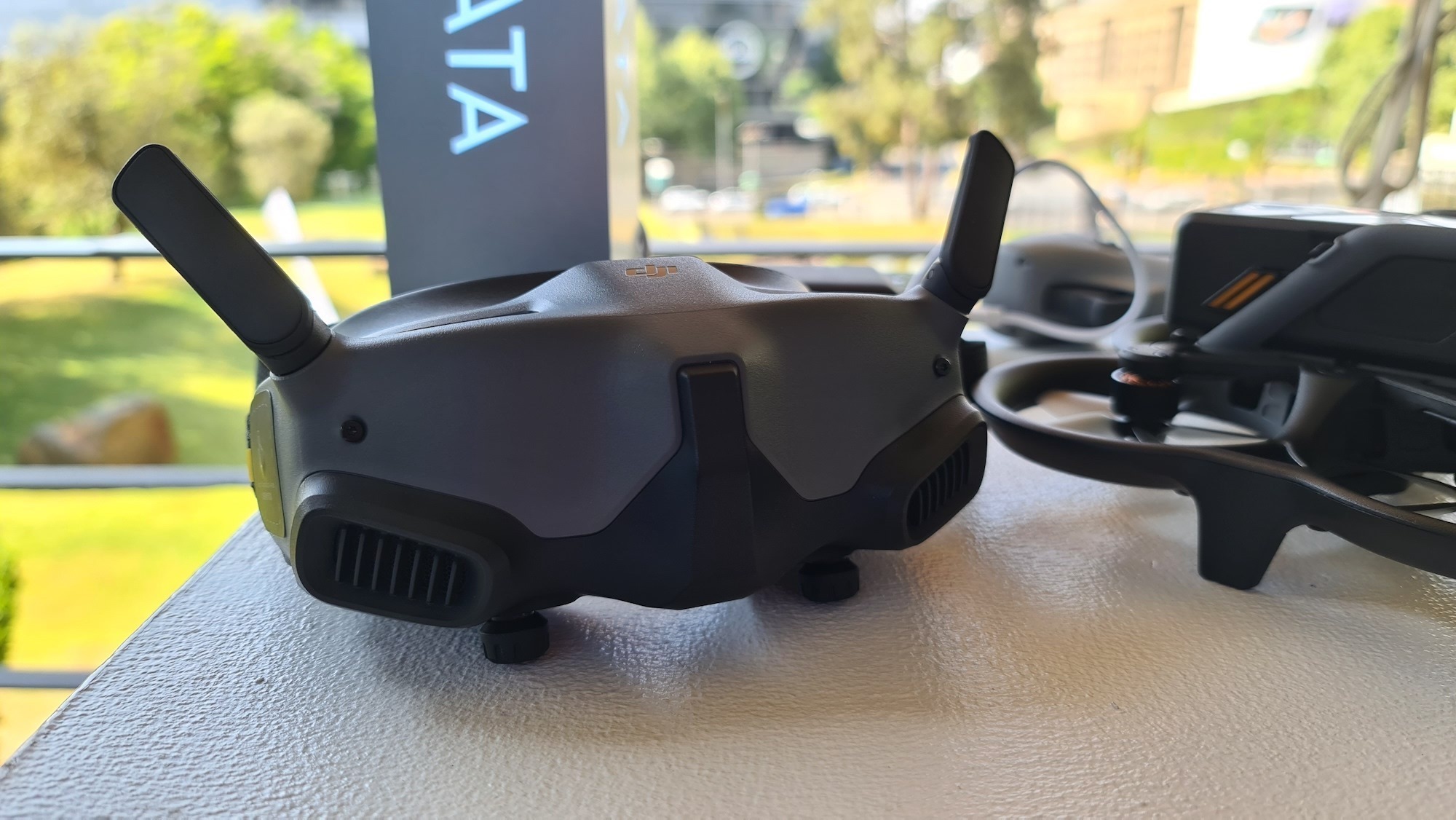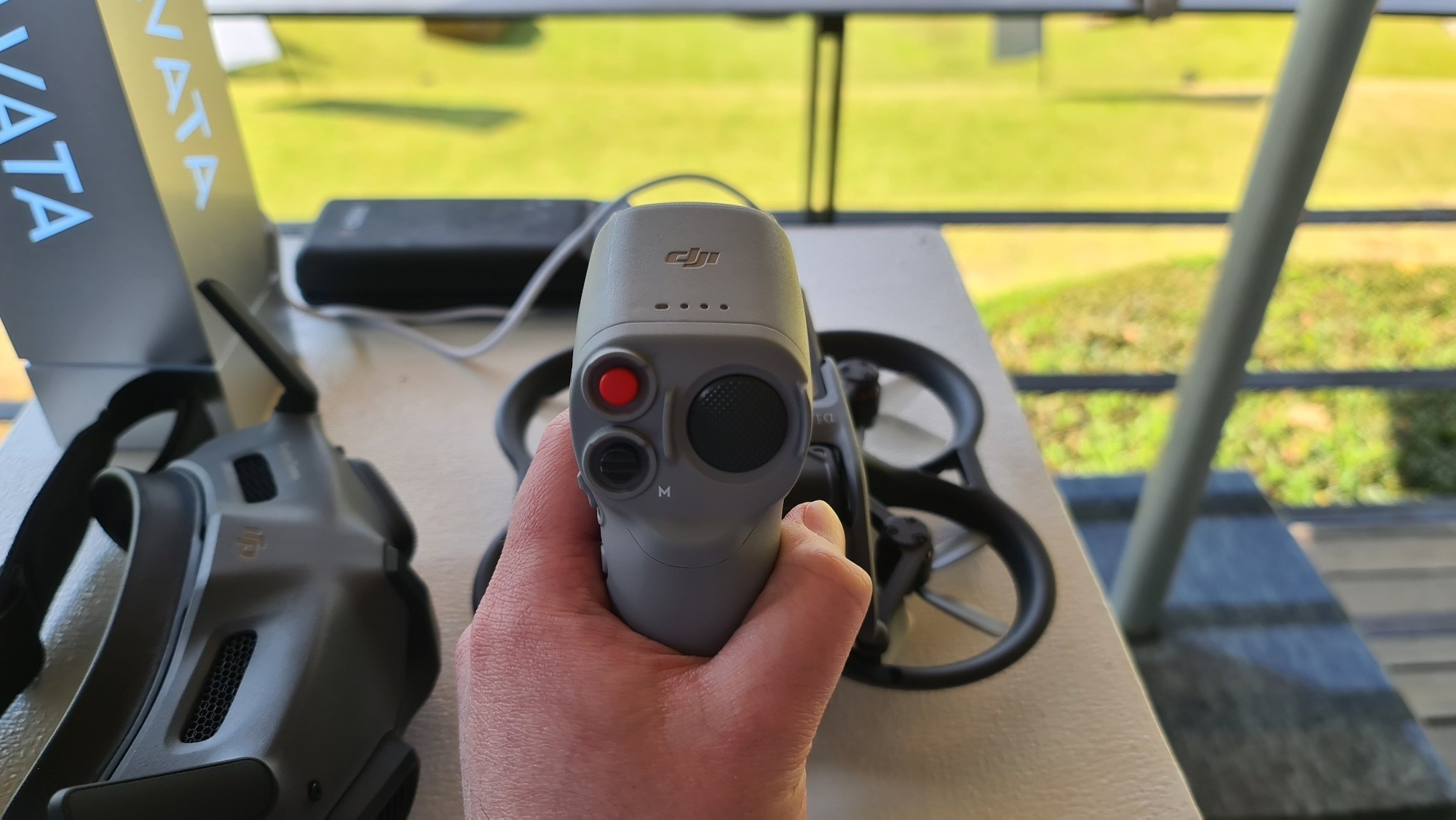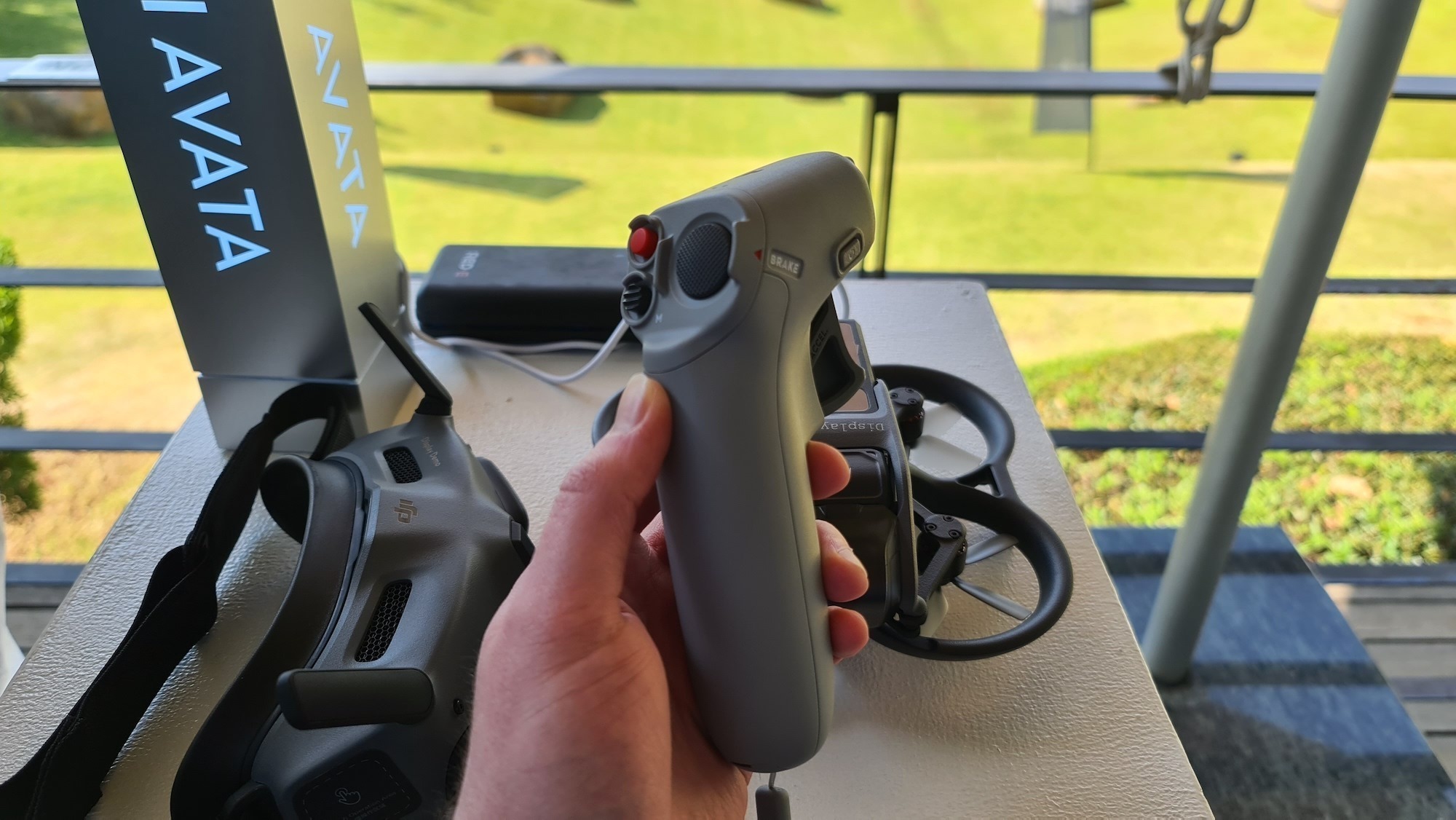DJI launched the second generation of its first-person view (FPV) drones, the DJI Avata, in South Africa recently. We went along to today’s Joburg event to get the important bits of info, like how it’s different from the DJI FPV, when you’ll be able to fly one of these, and how much it’ll cost.
Perfect for zipping around
DJI hasn’t only improved on the specs but the whole flying experience, especially if you’re new to FPV drones. The 410g-weighing 180mm square and 80mm tall DJI Avata ships with a 4K60fps camera that uses a six-axis gimbal and Electronic Image Stabilization (EIS) to help keep your lunch down and your footage stable. We wouldn’t call it mini but it’ll fit through small gaps (if you know how to fly it) and it’s certainly smaller than the DJI FPV.
The new camera and 48MP sensor offer a relatively wide field of view at 155 degrees. It’s got a fixed focus of 60cm but other settings can be manually adjusted. ISO, for example, ranges from 100 to 25,600. That sensor will offer video at 4K60fps but can be switched to 2.7K120fps for those slow-mo action shots.
Read More: Check out this Iceland volcano footage, shot with DJI’s new FPV drone
Unsurprisingly, the Avata has a MicroSD slot for your storage needs up to 256GB and offers 20GB of onboard storage. That’s only going to hold a few minutes of footage if you’re shooting in 4K. But it’ll be handy in a pinch. DJI is offering 18 minutes of flight time on a single battery charge, although your results might vary. Some of the battery’s charge is reserved for the automated return-to-home feature, so at least you won’t need to worry about that.
The Avata’s frame design protects the four 5-blade propellers when you’re still learning to fly and bumping into things. That also means you don’t need to worry about cutting other people or animals to shreds when flying indoors or in close quarters. Other safety features include geofencing but even so, it’s probably a good idea to have a spotter with you.
Those propellor guards also serve another function. The Avata ships with obstacle detection for objects on the ground, but if you happen to fly it into something so hard that it ends up on its back, activate Turtle Mode and it’ll flip itself right-side up.
FPV flight never looked so good
But what good is a new FPV drone without a new set of FPV goggles? DJI is launching its DJI Googles 2 alongside the Avata. These are based on MicroOLED tech and feature a resolution of 1920×1080. Thankfully, they come with a sun-shield to protect the internal lenses. They’re also lighter than the FPV Goggles V2 at just 290g. There’s a MicroSD slot tucked away so you can record or play video with the goggles as well.
They’re powered by a battery pack that fits in your pocket. If you feel like showing off, you can connect your phone to your setup and stream the feed to a supported display. The DJI Goggles 2 is also backward compatible with the DJI FPV. The Avata is also compatible with older manual stick controllers if you don’t feel like learning a new control scheme.
The DJI Avata is available for pre-order now in two packages. If this is your first foray into FPV drones and you don’t already have some of the equipment, you might want to opt for the Pro View combo. That comes with the Avata, the motion controller, and the new DJI Goggles 2. You’ll need quite a bit of spare change for that at R27,000. There is also the Fly Smart combo which bundles the Avata with the motion controller and the older FPV Goggles V2. That one is only R22,500. Why not get two and dual-wield?

